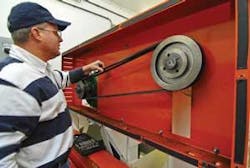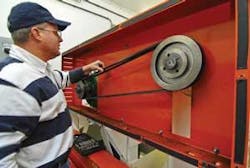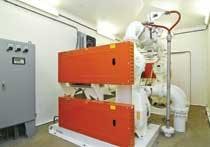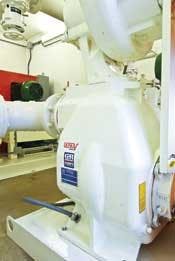New Pump System Minimizes Footprint, Improves Performance
Founded in 1925, the Western Carolina Regional Sewer Authority (WCRSA) is a special purpose district located in northwestern South Carolina. The organization serves over 400,000 customers in Greenville County and parts of Anderson, Spartanburg, and Laurens counties, covering a total of 296 square miles.
WCRSA maintains 300 miles of major sewer trunk lines and conducts operations through nine major wastewater treatment facilities located on three river basins; the Enoree, Reedy, and Saluda rivers.
For more than eight decades, WCRSA has been committed to protecting the public health and providing the necessary infrastructure to support economic growth in the state, despite the tightening of state and federal environmental regulations. Celebrating 80 years of environmental stewardship, WCRSA's goals are to be a world-class organization and to have zero regulatory violations.
While participating in EPA's CMOM program, the authority's Tubbs Mountain Road #1 pump station was identified as one of the WCRSA's top five repeat SSO sites. Originally installed in the 1960s, this particular pump station was operating at its maximum duty cycle and exhibiting telltale signs of aging.
WCRSA made a commitment to correct the problems associated with this SSO site within a two-year period – while maintaining operation of the site during the construction and rebuilding process, so as to minimize the community's discomfort.
"This process is very difficult – and can be very expensive," said Tony Walton, WCRSA Collection System Manager.
"The one thing that makes this project specifically difficult is space," said Trent Bowles, Pump Station Supervisor with the authority. "We're in a developed area, so we have a very small footprint that we have to work within. Currently, the site is very compact, but the redesign is putting even tighter restrictions on space. It's a challenge."
Rogers and Callcott, the planning firm charged with addressing the WCRSA challenge, originally drafted the new pump station design to incorporate two 7' x 10' pump stations working within a larger footprint. However, as a new and smaller footprint was mandated, creativity was required to uncover new solutions.
According to Rogers & Callcott, the Tubbs Mountain Road #1 pump station is also capacity limited by the facilities that receive its discharge. Therefore, the decision was made to reroute the force main to a remote destination, approximately two miles away – allowing WCRSA to discharge into a large gravity trunk sewer that would have no pumping facilities on it, rather than building a force main to its original discharge point.
Proceeding with the plan, the team determined the yield and the delivery conditions that would be needed to achieve their desired result. Because of the area served by the pumps, the station took into account a yield of 800 gpm to achieve a total dynamic head of 160 feet. A conventional, single pump was incapable of delivering this type of volume and pressure. The plan was drafted to incorporate two Gorman-Rupp T-series pumps, operating in a series, one right behind the other, in order to obtain the required head.
However, midstream, Rogers & Callcott became aware of Gorman-Rupp's new Ultra V pumping technology that could further maximize the new station's efficiency and performance overall – providing up to 30% more capacity than what the team was previously hoping to experience.
Using the new pump technology, "we're now able to use a lot more of the horsepower for future capacity too -- versus the previous design, which was really at the top of the 40-horsepower curve," said Barry Harms, P.E., of TenCarVa, the manufacturer's representative that serves WCRSA. "That also cuts down on our size requirements for the onsite generator."
Along with efficiency gains, the new pump offered a smaller foot print, freeing up space to allow for equipment to be better positioned for safer, more comfortable routine maintenance.
"To integrate the new technology required a quick redirect and redesign, but we went to work, modifying drawings to accommodate the change in technology," Walton said. "We felt the benefits of the site, the savings of this compact configuration, and the fact that these pumps are really more suitable for what we were trying to do, made it all worthwhile."
The Ultra V Series is a line of self-priming, centrifugal, solids handling pumps. The pumps feature a new volute geometry that helps improve efficiency. An increased suction port size reduces friction losses, decreasing net positive suction head (NPSHR) requirements. The pump also has an improved impeller design geometry and nominally increased shaft speed. Tests have demonstrated the pump's ability to achieve up to 60 percent increased pressure while offering up to 40 percent increased flow over other self-priming centrifugal solids handling pumps of the same size.
The WCRSA project was the first use of this pump South Carolina.
"The advantages that this new technology has over older technology made it well worth any associated risks," Bowen said.



